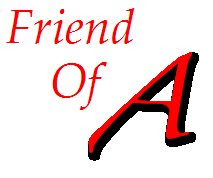A family member sends me a link to this news story about a marvelous creature, the sea slug Elysia chlorotica:
I know, it looks like a leaf. But, actually, its a mollusc, specifically a gastropod, like the snails and slugs you might find in your garden. This particular slug's green color is derived from the fact that it sucks up up intertidal algae as a food source and actually incorporates some of the captured chloroplasts into its own cells. The significance of the news item is that scientists from the University of South Florida have shown that the slug has acquired the genes to manufacture its own chlorophyll, a pigment required for photosynthesis. That is a little mind-blowing, and the best guess put forward to how this happened is a process (horizontal gene transfer) usually associated with bacteria.
Most of us have grown up knowing that plants do photosynthesis, and animals eat the plants. Plants are said to be autotrophs ('self-feeders') since they make their own food, while organisms like ourselves are described as heterotrophs ('other-feeders') since we eat the plants or some other creature higher up in the food chain based on the plants.
But the skimpy MSNBC article I was originally sent is a little breathless* when it describes the creature as 'half-plant, half-animal.' I (ahem) 'fished' around for other news coverage , and while this article is better on the science, it still uses the (misleading) 'part animal, part plant' tagline.
In the first place, algae are not plants, anymore than mushrooms are plants. While photosynthetic like plants (which are multicellular), algae as a group are simpler, the vast majority unicellular and found in aquatic environments. Algae are actually a very diverse group, more so than the plants, with many important biochemical differences, and phylogenetic studies reveals that the common ancestor of today's land plants and modern-day algae lived nearly 500 million years ago. Bottom line: algae are similar to plants in some ways, but different in others and they are not all that closely related.
In the second place, it would be just as clumsy to describe the sea slug Elysia chlorotica as 'half-animal, half-algae' . Elysia chlorotia is still a sea slug, it is still a mollusc, it is still 100 percent animal. How can I say that? Because, morphologically and behaviorally it is still defined in those terms: it is a heterotrophic, ingestive, predatory.
People will no doubt wonder if all these distinctions matter. After all, doesn't the sea slug have some algae genes? There is a subtle point that needs to be acknowledged, however. While properly speaking genes from algae could be called 'algae genes', there is nothing inherently 'algae-ish' about the genes. Genes are simply instructions to build proteins, and the fact that a sea slug appears to have acquired a recipe for building something exotic doesn't mean that it's now anything other than a sea slug.
After all, you and I both have fifty percent of the same genes as a banana. That doesn't make us 'half-person, half-plant'.
Now, some (often creationists) have suggested that the fact of horizontal gene transfer is a blow to the old 'tree of life' image in biology, that there might be something fundamentally wrong with the notion of common descent. Please. We can still draw phylogenetic trees, we just have to add some horizontal nodes to our branching diagrams:
All this does is establish another mechanism for the generation of genetic diversity in populations. If it is to be of value to any population, the incorporation of new genes must somehow enhance fitness. Natural selection will still be involved, and if the venerable image of a tree can not always be mapped exclusively to "vertical" branches, oh well. Evolution still happens!
* There are lots and lots of organisms that are not plants, but can still photosynthesize or which have little photosynthesizers living in them. Euglenoids, for example, are well-known protists that swim, they eat other microorganisms, and turn sunlight into sugars.
1/12/2010
GRIST FOR THE MILL
Posted by
Scott Hatfield . . . .
at
7:01 PM
![]()
Labels: creationism, science education
Subscribe to:
Post Comments (Atom)




No comments:
Post a Comment